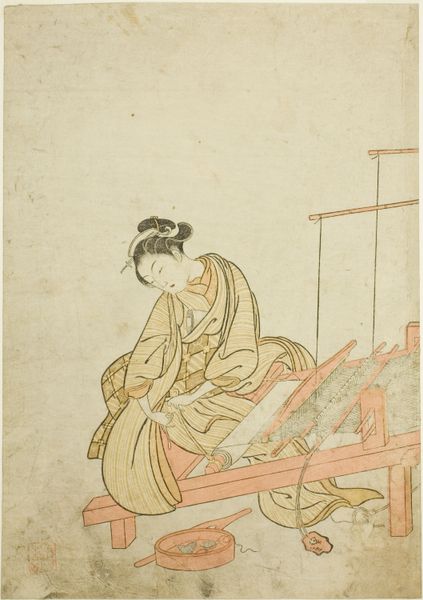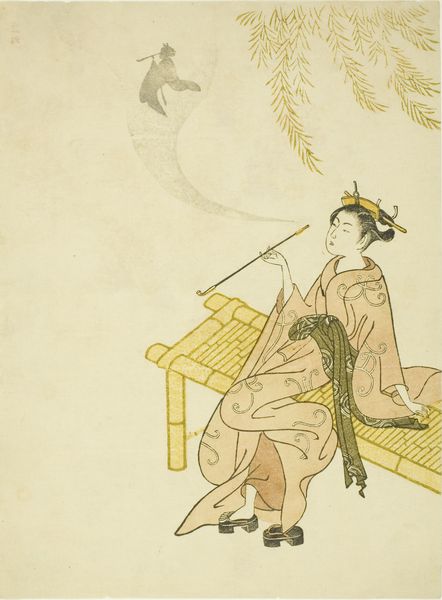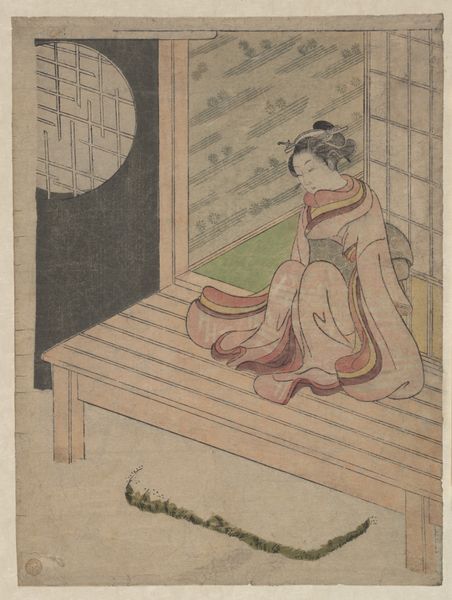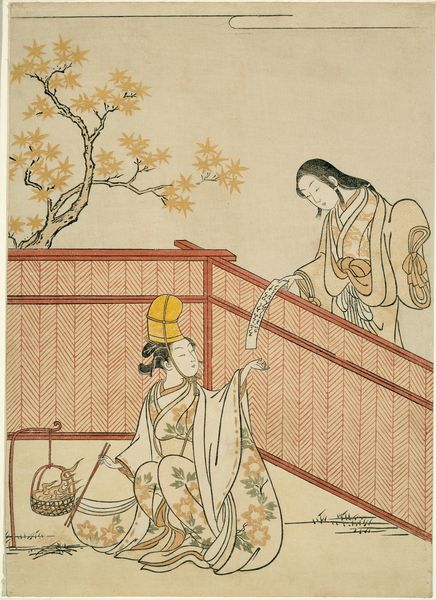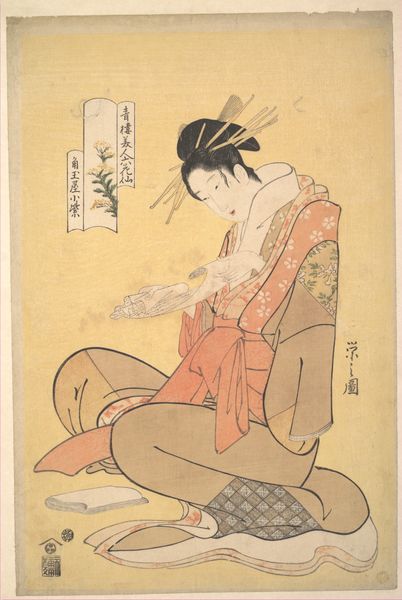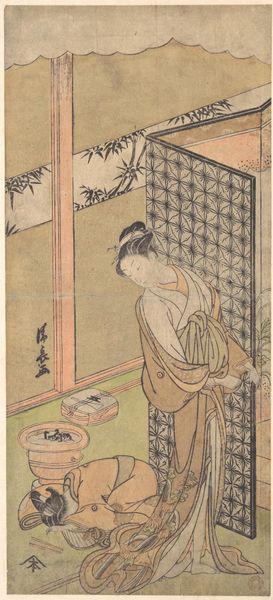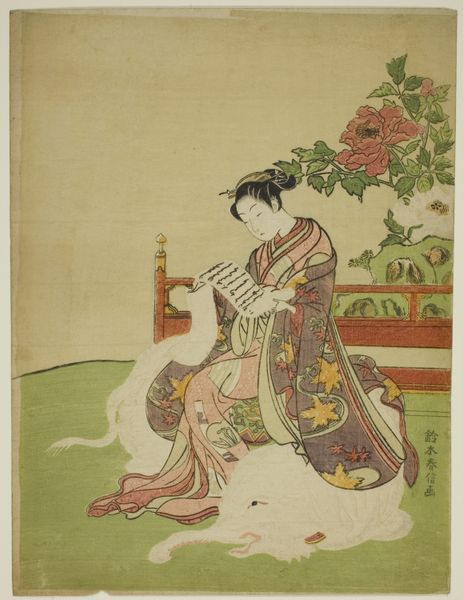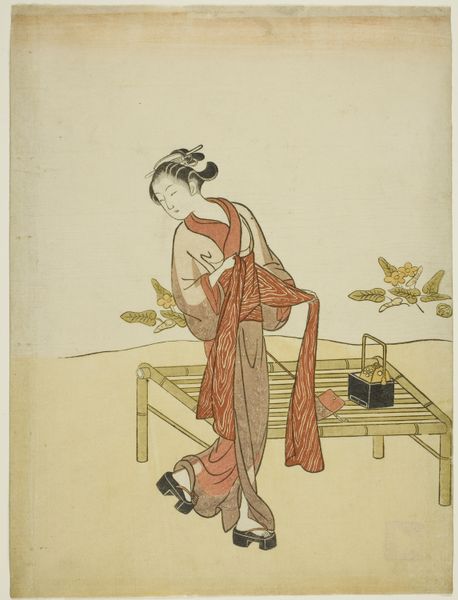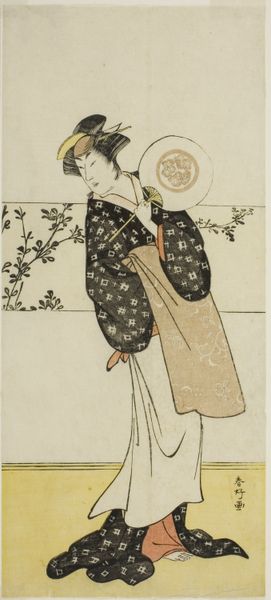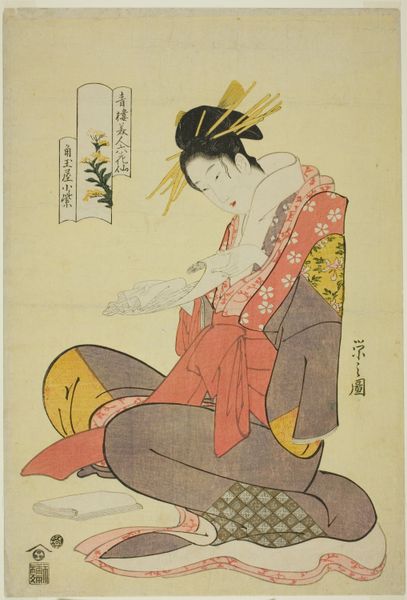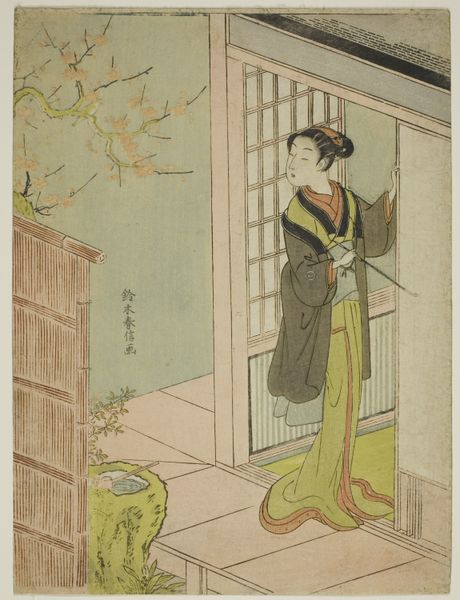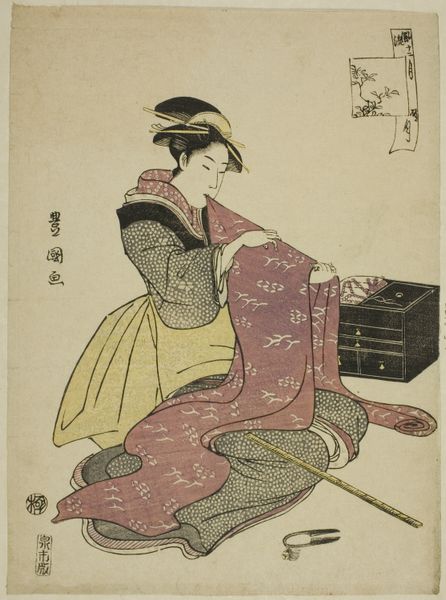
print, woodblock-print
# print
#
asian-art
#
ukiyo-e
#
figuration
#
woodblock-print
#
genre-painting
Dimensions: 11 3/8 × 8 1/4 in.
Copyright: Public Domain
Curator: Let’s turn our attention to this striking woodblock print from around 1765, titled "Fulling Cloth" by Suzuki Harunobu, currently held in the Art Institute of Chicago. What catches your eye first? Editor: Immediately, the circular composition creates a contained, intimate scene. The limited palette of ochre, pink, and black also evokes a tranquil, contemplative mood. Curator: It’s interesting how the circular framing isolates the figure, placing emphasis on her task. "Fulling," in this context, refers to the process of cleaning and thickening cloth. What do you see at play in Harunobu's composition in terms of representing gender and labor? Editor: There is definitely an interesting push and pull with how gender is visualized here. The woman's focus on what would usually be understood as domestic labor emphasizes her role within the household and wider social structures, while the softness of line and delicacy of colour lend to her beauty. I'd love to understand who she is, if not allegorical. Curator: "Ukiyo-e," which is "pictures of the floating world," celebrates daily life, leisure, and female beauty in particular. We see these prints circulated widely in Edo-period Japan. This print aestheticizes everyday activity for broader social consumption, so our subject becomes relatable to a whole class of women and female consumers of art. Editor: The patterning of her kimono and the gentle slope of her shoulders certainly adds to that element of refined beauty you mention, which then speaks to those ideas about consumption. The woodblock printing is exquisitely done. The texture created is minimal, precise and intentional. You feel she is close to nature because of these details. Curator: This controlled presentation of labor, transformed through artistry and the popular print market, makes one consider its significance to both those depicted and to their audiences in Japan. Editor: Ultimately, its power resides in this interplay between representation and form. We get a quiet, intense character study presented by Harunobu’s masterful woodblock printing. Curator: It certainly invites us to reflect on the artifice inherent in seeing labor through an artistic lens. I hadn't really considered this piece as character study. Editor: Thank you, it's given me more context with which to contemplate these themes and how they affect viewers' lived experiences.
Comments
No comments
Be the first to comment and join the conversation on the ultimate creative platform.
